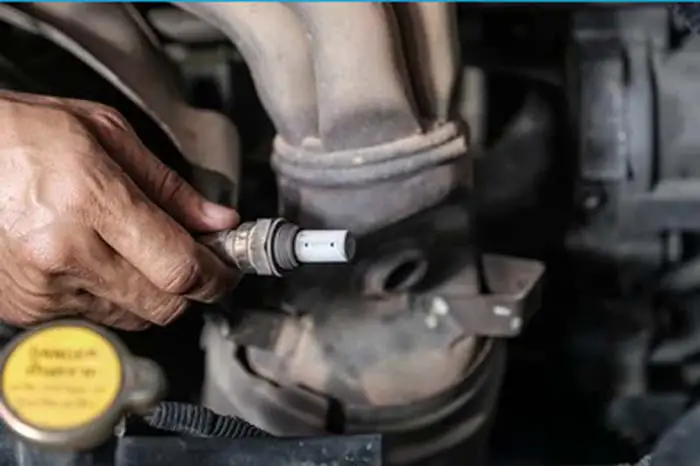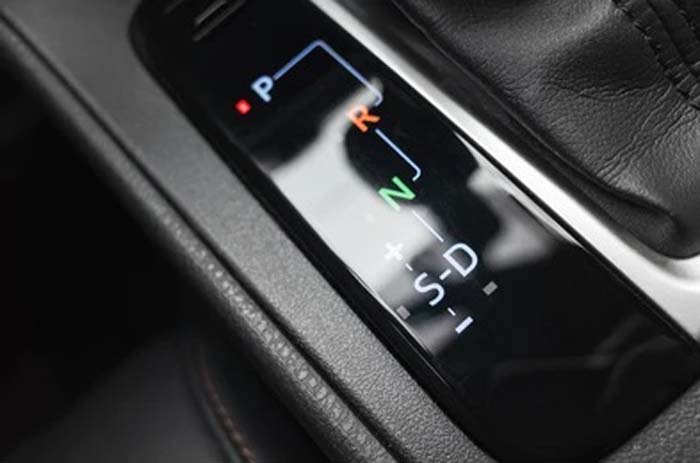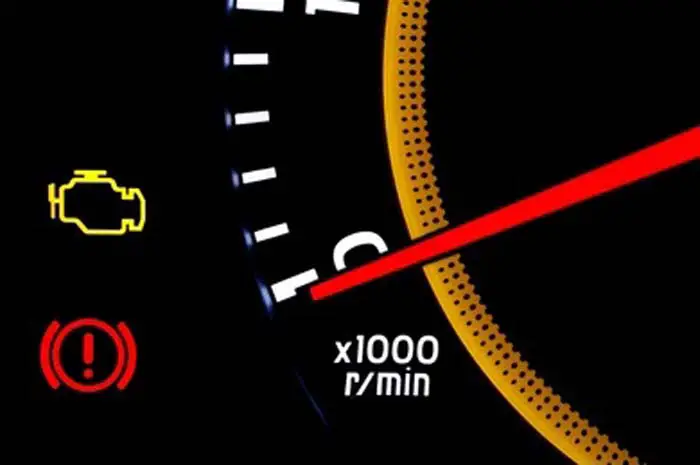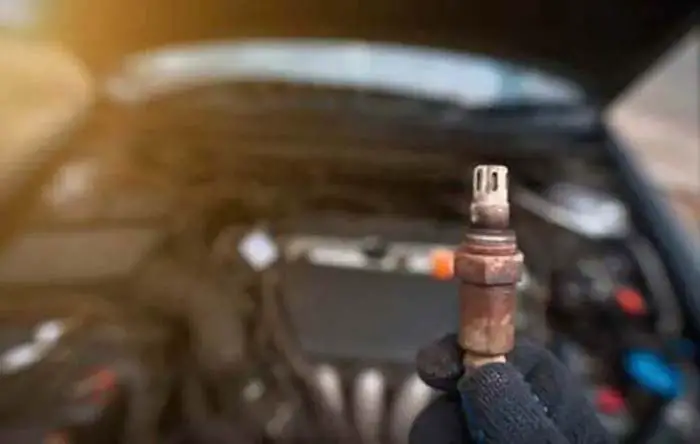
An oxygen sensor also called an O2 sensor or lambda sensor (λ) is an important component of engine management that detects how much oxygen is left unburnt in the drain manifold after combustion.
The oxygen sensor is located in the drain manifold before and after the catalytic converter. The oxygen sensor placed after the catalytic converter is called the downstream oxygen sensor/detector, while the oxygen sensor placed before the catalytic converter is called the upstream oxygen sensor/detector. The exhaust gases can carry, oil, grease, carbon, pollutants, etc, whose deposition is a sign that your O2 sensor is faulty.
Fortunately, this whole page is about the causes of oxygen sensor failure. In this powerful guide, you will quickly learn what causes an oxygen sensor to fail.
Related Post: Oxygen Sensor In A Car, How It Works, & Construction
What Causes An Oxygen Sensor To Fail Or Go Bad
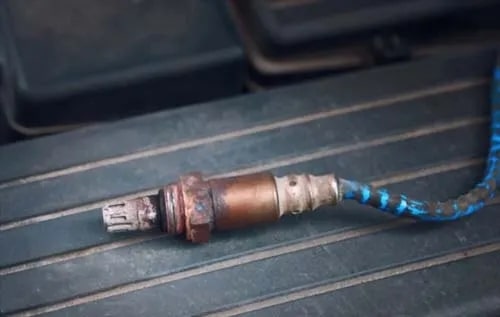
Multiple reasons can cause the oxygen detector device to fail. Sometimes, Oxygen detector devices get clogged and contaminated due to the byproducts of the fuel.
When a detector device gets failed, it does not provide the correct data to the ECU, and the car causes several problems. Here below is the seven reasons, which are major causes of failure. Avoid it not to damage your car.
Related Post: Where Is Oxygen Sensor Located
7 Reasons Why Oxygen Sensor Fails
1. Time Kills

Time is one of the most common causes of failure. The life span of the oxygen detector sensor is 3 to 5 years or 60,000 to 90,000 miles.
Over time, like every part in the car wears out, the same is true for them, it wears out with time, which affects the oxygen detector device response characteristics, resulting in a failure.
Related Post: Oxygen Sensor Codes Keep Coming Back?
2. Contamination
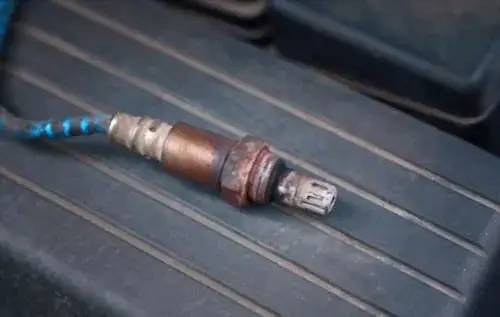
Contamination is another big reason, which causes oxygen to fail. The O2 detector device may become contaminated with many byproducts of fuel, such as lead, sulfur, and fuel additives.
This contamination of byproducts stops the O2 detector device from sending the right signal to the ECU as a result, the oxygen detector sensor goes bad, and needs to be replaced with a new Oxygen sensor.
Related Post: Oxygen Sensor: 1, 2, 3, 4 Wire O2 Sensor Wiring Diagram
3. High Temperature

These O2 detector devices become faulty due to high temperatures. In general, high discharge gas temperatures make your Oxygen detector device faulty.
This extremely high temperature quickly reduces the lifespan, and as a result, the O2 sensor dies.
Related Post: Oxygen Sensor Voltage
4. Not Doing Regular Maintenance
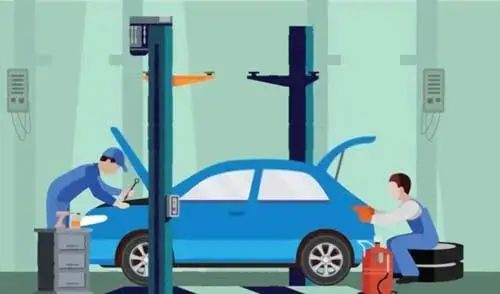
There is a saying, if you are not growing, you are dying. It means, if you want to maintain something, you have to grow it, otherwise, that thing will slowly die. Similarly, if you want your vehicle to run properly, you have to take care of it, I mean you have to do regular check-ups.
A good working oxygen detector device helps to reduce fuel usage by as much as 40%. The old sensor will increase the number of unburnt gases. These components will also fail faster due to a dirty air intake filter and a fouled spark plug.
5. Using Low-Quality Gasoline

Low-quality gasoline is also a big cause of failing oxygen sensors. Fuel, which is not recommended for your vehicle, or low-quality fuel can reduce their average life. It is because low-quality gasoline can produce more sulfur, lead, and oil ashes, which makes the O2 sensors coated with it.
6. A Leaky Gasket

A leaky gasket can also cause failure. A leaky head gasket can produce silicate, which blocks the oxygen detector device, keeps your sensor from sending signals, and create the illusion that the sensor is bad.
This is an Info
The instrument which measures unburnt oxygen can be contaminated with various exhaust byproducts including silicates from an internal engine coolant leak.
Related Post: Can Water Damage The Oxygen Sensor?
7. A Worn-Out Piston Rings
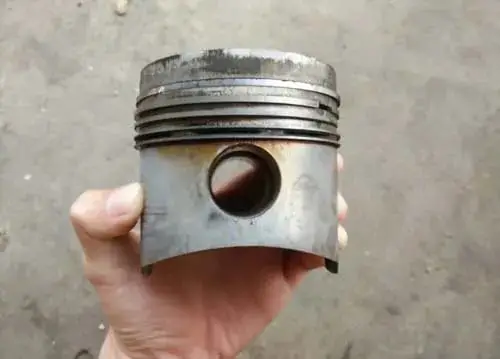
An Oxygen sensor can become faulty due to worn-out piston rings. Worn-out piston rings, valve guides, or cracks in the cylinder block and combustion chamber produce phosphorous from the engine oil, which causes to fail the oxygen detector device.
Pro-Tip
One thing I want to share with you is that whenever the oxygen detector device gets faulty, try to figure out the exact cause behind the failure. Just changing the oxygen detector sensor without targeting the underlying problems will again fail it.
Related Post: What Are Bank 1 And Bank 2
What Are The Issues A Bad Oxygen Sensor May Cause
The oxygen detector device is an important component that measures the amount of oxygen present in exhaust gases. A faulty component causes a variety of issues with a car’s performance. Some of the most common problems include:
- Poor Gas Economy: A faulty sensor negatively affects the engine by using fuel that isn’t recommended for your vehicle like running on a lean mixture (mixture without enough fuel) or rich fuel mixture (too much fuel, not enough air) which indicates that sometimes sensor is the issue for poor gas economy
- Decreased Engine Performance: A defect in the oxygen sensor of a car affects optimal engine performance by creating a misfire or running poorly, due to which the vehicle experiences problems like a decrease in power and acceleration.
- Increased Emissions: A faulty sensor can cause the engine to burn fuel inefficiently, leading to an increased amount of oxygen present in the exhaust.
- Trigger The Check Engine Light: A faulty sensor signals the “Check Engine” light on the dashboard, alerting the driver to a potential problem with the car.
It is important to address any issues caused by the oxygen sensor in your vehicle as soon as possible to avoid further damage to the car and to ensure that it’s working properly.
Can I Drive With a Failing O2 Sensor

While it may be possible to drive a short distance with a bad sensor, it is not a good idea to continue driving if the O2 sensor fails because it is continuously affecting oxygen levels in the exhaust. If an oxygen detector device becomes caked with byproducts of combustion, it may not be able to accurately measure the oxygen content of the exhaust gas. You must replace an oxygen sensor with a new o2 sensor.
A poor condition of the sensor is able to cause problems with the engine’s performance and fuel efficiency by using the wrong ratio of fuel mixture, which will also increase discharge. A faulty sensor becomes dangerous for the vehicle and may even render it undrivable.
It is best to change a bad sensor in your vehicle if the sensor is failing to avoid any potential issues and to ensure the proper functioning of the vehicle.
When Should You Replace An Oxygen Sensor
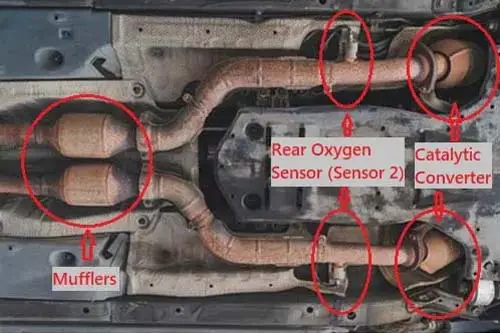
There are a few signs that you may need to replace your oxygen detector device.
- Your Vehicle’s Discharge Levels Are Higher Than Normal: If car’s emission test shows that emission levels are higher than usual, it may be a sign that your oxygen detector is not functioning properly. The oxygen detector device is responsible for measuring the volume of oxygen content in the exhaust, so if it fails, it can result in higher discharge levels.
- Your Fuel Economy Is Worse Than Normal: A bad oxygen sensor can also affect the amount of fuel consumed by your car. If your gas mileage is worse than usual, it may be a sign that your oxygen detector device needs to be replaced.
- Your Check Engine Light Is On: If your check engine light is on, it may be a sign that your oxygen detector device is not functioning correctly. You can use a diagnostic tool to retrieve the fault code by facing such symptoms of a bad oxygen detector device.
- Your Air Filter Or Catalytic Converter Needs To Be Changed: If your vehicle needs air filter replacement, it may be a good idea to also replace the oxygen detector device at the same time when the vehicle is checked by an electrician. These components often fail together due to the high levels of heat and oxygen in the exhaust system.
In general, it is a good idea to change your oxygen detector every 60,000 to 90,000 miles. This will help ensure that your vehicle’s discharge levels are within the normal range and that your fuel consumption is not increased by a faulty oxygen sensor. If you suspect that your oxygen sensor may be faulty, it is recommended that your vehicle be checked by a mechanic as soon as possible to avoid further damage to your car.
Oxygen Sensor Replacement Tips
Here are a few tips to keep in mind when replacing oxygen detector device:
- Make sure to use the correct type of sensor for your car. A wrong sensor will affect the exhaust stream by providing inaccurate data about oxygen levels in the exhaust.
- Follow the instructions provided with the new sensor carefully to ensure proper installation.
- Use a torque wrench to tighten the device to the correct torque specification.
- If you are having difficulty accessing the oxygen detector device, try using an o2 socket or extension bar to reach it.
- If you are not comfortable performing the replacement yourself, it is always a good idea to have your vehicle checked by a professional electrician.
Frequently Asked Questions (FAQs)
The average oxygen detector device of your car will last anywhere from 30,000 to 50,000 miles. However, there are a number of factors that can affect the lifespan of the device. These include the quality of the sensor, the make and model of the vehicle in which it is installed, and the driving habits of the driver.
In order to prolong the life of your oxygen detector device, it is important to follow a few simple tips. First, make sure that your vehicle is running on clean fuel which will keep your car running smoothly. This means using fuel that is free of contaminants and impurities. Second, keep your engine tuned up. This will help to reduce the number of harmful discharges, which are produced. In the end, modern cars have their own schedule for replacing the oxygen detector device so check them accordingly.
Sign Up

